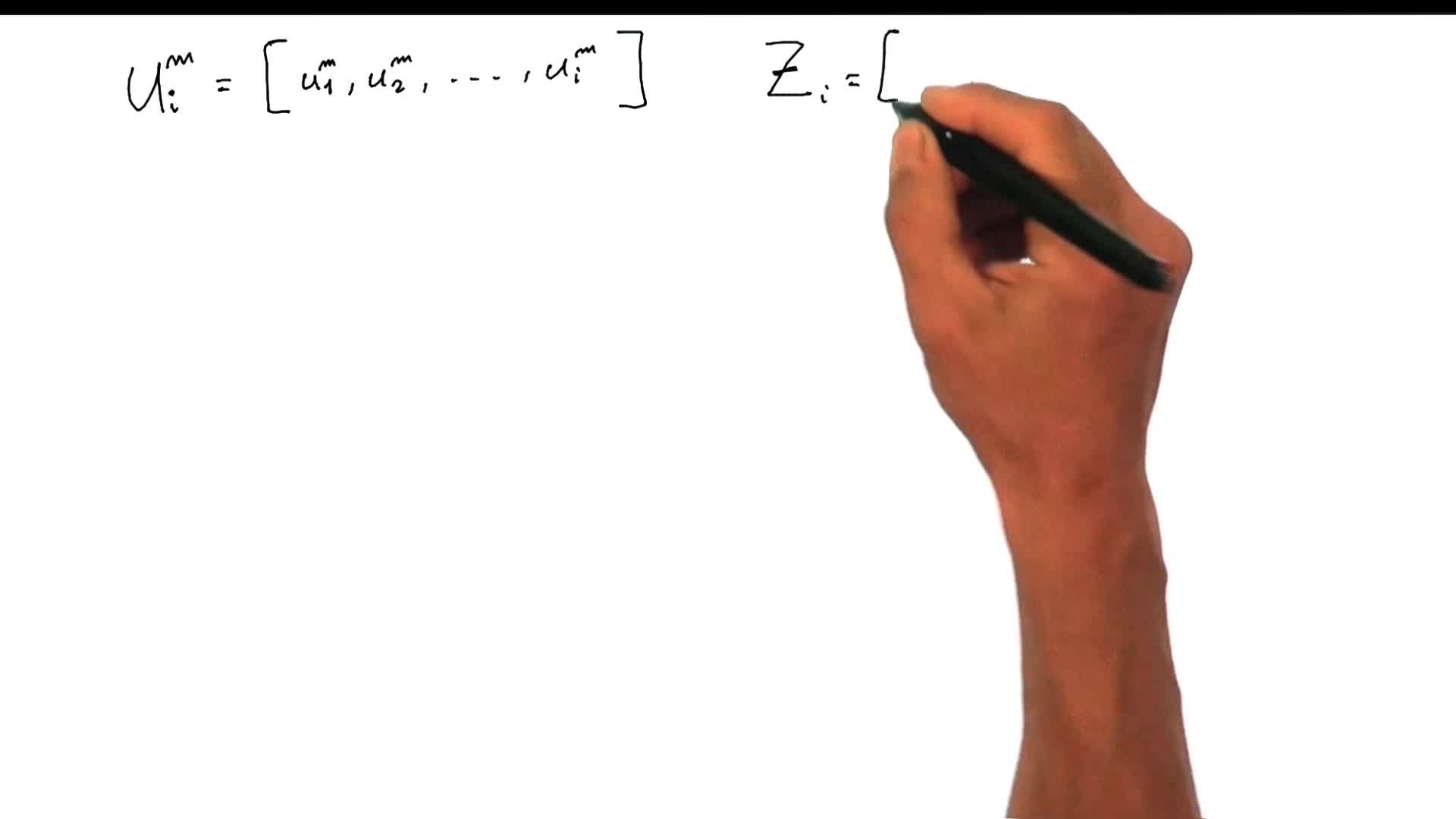Notice
2.2. Characterization of proprioceptive and exteroceptive sensors
- document 1 document 2 document 3
- niveau 1 niveau 2 niveau 3
Descriptif
Before deriving theequations of the Bayes filter, I want to remind you a few conceptsin the theory of probability, and also somemathematical characterization for the statisticalerror of the robot's sensors.
In particular, in thissequence, what I want to do, is to derive the link betweenthe robot configuration, and the physical quantities thatare measured by the robot's sensors.
Thème
Documentation
Liens
Dans la même collection
-
2.6. The Bayes Filter
MartinelliAgostinoThe equations of the Bayes filters are the equation that allow us to update the probability distribution for the robot to be in a given configuration by integrating the information that are in the
-
2.4. Sensor statistical models
MartinelliAgostinoSo far in the characterization of our sensor measurements, we didn't talk about the errors. This is precisely what we want to do in this video. In particular, we want to compute two probability
-
2.7. Grid Localization: an example in 1D
MartinelliAgostinoNow that we have the equations of the Bayes filter, we need a method in order to implement in real cases these equations. So, in the following, I want to discuss two methods, which are commonly
-
2.3. Wheel encoders for a differential drive vehicle
MartinelliAgostinoIn this video, we want to discuss the case of a wheel encoders in 2D, and in particular the case of a robot equipped with a differential drive which is very popular in mobile robotics.
-
2.5. Reminds on probability
MartinelliAgostinoIn this sequence I want to remind you a few concepts in the theory of probability and then in the next one we finally derive the equations of the Bayes filter. So the concept that I want to
-
2.8. The Extended Kalman Filter (EKF)
MartinelliAgostinoWe have seen the grid localization, and the advantage of this approach is that we can deal with any kind of probability distribution; in particular we don't need to do a Gaussian assumption. The
-
2.1. Localization process in a probabilistic framework: basic concepts
MartinelliAgostinoIn this part, we will talk about localization which is a fundamental problem that a robot has to be able to solve in order to accomplish almost any tasks. In particular, we will start by
Sur le même thème
-
Et si l’intelligence artificielle déferlait sur les océans ?
L’évolution des technologies d’observation et de modélisation a joué un rôle central dans l’accroissement des connaissances sur le fonctionnement des océans ou dans le développement des activités
-
La vidéo sous-marine au service de la recherche halieutique
Accessible à de nombreuses applications, tant en biologie ou qu'en technologie des pêches, la vidéo sous-marine est de plus en plus utilisée dans le domaine de la recherche halieutique. Les progrès
-
5.6. Predicting Human Motion
Vasquez GoveaAlejandro DizanIn video 5.5 we have defined an HMM in Python. In this video we are going to learn how to use it to estimate and predict motion.
-
5.9. Other approaches: Planning-based approaches
Vasquez GoveaAlejandro DizanIn this video we are going to study a second, and probably the most promising alternative for motion prediction: planning-based algorithms.
-
5.4. Bayesian filter inference
Vasquez GoveaAlejandro DizanIn this video we will review the base filter and we will study a particular instance of the Bayesian filter called Hidden Markov models which is a discrete version of a Bayesian filter.
-
5.7. Typical Trajectories: drawbacks
Vasquez GoveaAlejandro DizanIn previous videos we have discussed how to implement the typical trajectories and motion patterns approach. In this video we are going to discuss what are the drawbacks of such an approach,
-
5.5. From trajectories to discrete time-state models
Vasquez GoveaAlejandro DizanIn this video we are going to apply the concepts we have reviewed in the video 5.4 into real trajectories.
-
5.8. Other approaches: Social Forces
Vasquez GoveaAlejandro DizanIn this video we will review one of the alternatives we are proposing to the use of Hidden Markov models and typical trajectories: the Social Force model.
-
4.5. Detection and Tracking of Mobile Objects – Problem and Approaches
LaugierChristianThis video adresses the Detection and Tracking of Mobile Objects (DATMO) problem.
-
5.3b. Learning typical trajectories 2/2
Vasquez GoveaAlejandro DizanIn this video we are aiming to improve on the results we obtained in video 5.3a, in particular with respect to the greyed-out trajectories that are badly represented.
-
4.9. Situation Awareness – Collision Risk Assessment and Decision (Object level)
LaugierChristianThis video addresses the problem of collision risk assessment and decision.
-
4.1. Robot Perception for Dynamic environments: Outline and DP-Grids concept
LaugierChristianThe fourth part of the course addresses perception, situation awareness and decision making. In this first video, we're giving an outline of the problem and introducing the new concept of dynamic



















